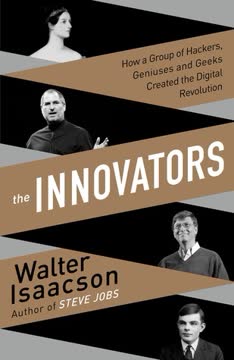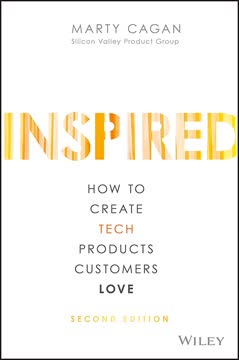Key Takeaways
1. Grit: The Secret Ingredient to Extraordinary Success
Grit is about sweat, not swagger. Character, not charisma.
Grit defined. Grit is the combination of passion and perseverance that enables individuals to achieve long-term goals, despite obstacles and setbacks. It encompasses four key components:
- Guts: The courage to take on tough challenges and not falter in adversity
- Resilience: The ability to bounce back from failures and setbacks
- Initiative: Being a self-starter and taking action without prompting
- Tenacity: The relentless ability to stay focused on a goal
Grit in action. Numerous successful individuals, from Steve Jobs to Colin Powell, achieved greatness not through innate talent but through persistent hard work and determination. Research by psychologist Angela Duckworth has shown that grit is a more accurate predictor of success than IQ or talent alone.
2. Talent Is Overrated: Hard Work Trumps Natural Ability
Talent is cheaper than table salt. What separates the talented individual from the successful one is a lot of hard work.
The talent myth debunked. Many people believe that innate talent is the key to success, but research suggests otherwise. Studies have shown that:
- High IQ doesn't guarantee success (e.g., Terman's study of gifted children)
- Effort and practice are more important than natural ability
- Grit often compensates for lower IQ or talent
Developing grit. Anyone can cultivate grit through:
- Setting challenging goals and persisting through obstacles
- Embracing a growth mindset that views abilities as developable
- Focusing on effort and improvement rather than innate talent
- Seeking out opportunities to stretch beyond comfort zones
3. Turn Dreams into Actionable Goals and Plans
If you want your dreams to become reality, wake up already.
From dreams to goals. While dreaming is important, it's not enough to achieve success. To turn dreams into reality:
- Set specific, measurable, achievable, relevant, and time-bound (SMART) goals
- Break large goals into smaller, manageable steps
- Create action plans with deadlines and milestones
- Regularly evaluate progress and adjust plans as needed
Avoid the pitfalls of daydreaming. Research shows that excessive fantasizing about future success can actually hinder achievement by:
- Reducing motivation to take action
- Creating unrealistic expectations
- Failing to prepare for obstacles and setbacks
Instead, focus on concrete planning and consistent effort to bridge the gap between dreams and reality.
4. Embrace Risk and Failure as Stepping Stones to Success
Failure is how we learn—it's how we develop and acquire grit.
Reframing failure. Many successful individuals attribute their achievements to lessons learned from failures:
- James Dyson: Created over 5,000 failed prototypes before inventing his successful vacuum cleaner
- Thomas Edison: Viewed his numerous unsuccessful attempts as steps towards success
- Oprah Winfrey: Fired from her first TV job, used it as motivation to prove her worth
Strategies for embracing failure:
- View failures as learning opportunities
- Analyze mistakes to improve future performance
- Cultivate resilience by bouncing back from setbacks
- Seek out challenges that push you out of your comfort zone
- Celebrate small victories along the way to maintain motivation
By reframing failure as a necessary part of growth and success, individuals can develop the grit needed to persevere through challenges.
5. Cultivate Patience and Perseverance for Long-Term Achievement
Grit speaks to our capacity for hope—and whether you see the world through the lens of a glass half full or a glass half empty.
The power of delayed gratification. Success often requires enduring short-term discomfort for long-term gains. Strategies to develop patience and perseverance include:
- Breaking large goals into smaller, achievable milestones
- Celebrating small victories along the way
- Focusing on the process rather than just the end result
- Practicing mindfulness and self-control
Overcoming instant gratification. In today's fast-paced world, it's easy to succumb to the desire for quick rewards. To combat this:
- Set reminders of long-term goals
- Use accountability partners or groups
- Visualize future success to stay motivated
- Practice self-discipline in small daily habits
By cultivating patience and perseverance, individuals can develop the grit necessary to achieve significant long-term goals.
6. Develop Resilience: Bend Like Bamboo, Don't Break
Nature has a funny way of breaking what does not bend.
The bamboo metaphor. Like bamboo, which is both strong and flexible, resilient individuals can:
- Adapt to changing circumstances
- Recover quickly from setbacks
- Maintain core strength while being flexible in approach
Building resilience. Strategies to develop a resilient mindset include:
- Cultivating optimism and positive self-talk
- Developing problem-solving skills
- Building strong support networks
- Practicing self-care and stress management
- Embracing change as an opportunity for growth
By developing resilience, individuals can navigate life's challenges with greater ease and maintain their drive towards long-term goals.
7. Age Is Just a Number: It's Never Too Late to Pursue Your Passion
You can chase your dreams at any age. You're never too old.
Challenging age stereotypes. Many individuals have achieved remarkable success later in life:
- Diana Nyad: Completed a 110-mile swim from Cuba to Florida at age 64
- Grandma Moses: Began her painting career at 78
- Colonel Sanders: Founded KFC at 65
Strategies for late bloomers:
- Embrace lifelong learning and skill development
- Leverage accumulated wisdom and experience
- Focus on passion and purpose rather than age
- Challenge societal expectations and self-limiting beliefs
- Maintain physical and mental health to support pursuits
By rejecting arbitrary age limits, individuals can tap into their grit and pursue meaningful goals at any stage of life.
8. Harness Your Grit for the Greater Good
Happiness is not the absence of problems. It's the ability to deal with them.
The evolutionary basis of altruism. Humans are hardwired to cooperate and help others, which can provide a deep source of motivation and satisfaction.
Applying grit to social causes:
- Identify issues you're passionate about
- Set realistic goals for making a difference
- Develop skills and knowledge relevant to your cause
- Build networks and partnerships for greater impact
- Persist through challenges and setbacks
Benefits of altruistic grit:
- Increased sense of purpose and fulfillment
- Enhanced well-being and life satisfaction
- Positive impact on communities and society
- Development of valuable skills and experiences
By channeling grit towards meaningful causes, individuals can achieve personal growth while contributing to the greater good.
Last updated:
FAQ
What's "Grit to Great" about?
- Focus on Grit: "Grit to Great" by Linda Kaplan Thaler and Robin Koval explores how perseverance, passion, and pluck can transform ordinary individuals into extraordinary achievers.
- Success Stories: The book shares stories of well-known figures like Steve Jobs and Michael Jordan, who were not initially seen as destined for greatness but succeeded through grit.
- Learnable Trait: It emphasizes that grit is not an innate trait but a skill that can be developed and honed over time.
- Practical Advice: The authors provide practical advice and strategies for cultivating grit in various aspects of life, from personal goals to professional achievements.
Why should I read "Grit to Great"?
- Inspiration: The book offers inspiring stories of individuals who achieved success through sheer determination and hard work.
- Actionable Strategies: It provides actionable strategies to develop grit, which can be applied to personal and professional challenges.
- Universal Appeal: Whether you're a student, professional, or entrepreneur, the lessons in the book are applicable to anyone looking to improve their perseverance and resilience.
- Empowerment: Reading this book can empower you to overcome obstacles and pursue your goals with renewed vigor and confidence.
What are the key takeaways of "Grit to Great"?
- Grit Over Talent: The book argues that grit, more than talent or intelligence, is the key to success.
- Four Components of Grit: It identifies four essential components of grit: guts, resilience, initiative, and tenacity.
- Learned Skill: Grit can be developed through practice and is not something you are simply born with.
- Cultural Shift: The authors discuss the cultural shift from valuing self-esteem to recognizing the importance of grit and resilience.
What are the best quotes from "Grit to Great" and what do they mean?
- "Grit is about sweat, not swagger." This quote emphasizes that true success comes from hard work and perseverance, not just charisma or talent.
- "Failure is how we learn." It highlights the importance of embracing failure as a learning opportunity and a stepping stone to success.
- "You can either be overtaken by fear, or you can overcome it." This quote from Nik Wallenda underscores the power of mindset in overcoming challenges.
- "The fulfilling life is an achievement, not something that will fall into your lap." It stresses that a meaningful life requires effort and dedication.
How do the authors define grit in "Grit to Great"?
- Combination of Traits: Grit is defined as a combination of perseverance, passion, and pluck that drives individuals to achieve their goals.
- Old-Fashioned Term: The authors describe grit as an old-fashioned term that is experiencing a renaissance due to its importance in achieving success.
- Learnable Quality: Grit is portrayed as a quality that can be learned and developed, rather than an innate trait.
- Secret to Success: The book positions grit as the secret ingredient to success, more important than talent or intelligence.
What are the four components of grit according to "Grit to Great"?
- Guts: The courage to take on challenges and not falter in the face of adversity.
- Resilience: The ability to bounce back from setbacks and keep moving forward.
- Initiative: Being a self-starter and taking proactive steps toward achieving goals.
- Tenacity: The relentless focus and determination to stay committed to a goal despite obstacles.
How do the authors suggest developing grit in "Grit to Great"?
- Set Small Goals: Break down larger goals into smaller, manageable tasks to maintain motivation and track progress.
- Embrace Failure: View failure as a learning opportunity and a necessary step toward success.
- Practice Patience: Develop the ability to delay gratification and stay committed to long-term goals.
- Cultivate Optimism: Maintain a positive outlook and believe in your ability to overcome challenges.
What role does failure play in "Grit to Great"?
- Learning Opportunity: Failure is seen as a crucial learning opportunity that helps individuals grow and improve.
- Motivation: The book suggests that failure can be a powerful motivator, driving people to work harder and smarter.
- Resilience Building: Experiencing and overcoming failure builds resilience, a key component of grit.
- Innovation Driver: Failure is often a catalyst for innovation and creativity, leading to new solutions and breakthroughs.
How do the authors address the concept of talent in "Grit to Great"?
- Talent Myth: The book challenges the myth that talent alone leads to success, emphasizing the importance of hard work and perseverance.
- Overrated Quality: Talent is portrayed as overrated and insufficient without the application of grit.
- Complementary to Grit: While talent can provide an initial advantage, grit is necessary to sustain long-term success.
- Focus on Effort: The authors encourage focusing on effort and determination rather than relying solely on natural ability.
What examples do the authors use to illustrate grit in "Grit to Great"?
- Steve Jobs: Despite a low GPA and dropping out of college, Jobs' grit led him to become a pioneer in the tech industry.
- Michael Jordan: Initially cut from his high school basketball team, Jordan's determination made him one of the greatest basketball players.
- Colin Powell: With an average academic record, Powell's perseverance propelled him to become a prominent military and political leader.
- James Patterson: The bestselling author exemplifies grit through his disciplined writing routine and relentless pursuit of success.
How does "Grit to Great" address the cultural shift from self-esteem to grit?
- Self-Esteem Movement: The book critiques the self-esteem movement, which emphasized praise and confidence over hard work and resilience.
- Backlash: It discusses the backlash against the self-esteem movement, highlighting the importance of grit in achieving success.
- Teaching Grit: The authors advocate for teaching grit and resilience in schools to better prepare students for real-world challenges.
- Cultural DNA: Grit is positioned as a core element of cultural DNA, essential for raising strong, resilient, and self-reliant individuals.
What practical exercises do the authors recommend in "Grit to Great"?
- Grit Quiz: The book offers a Grit Quiz to help readers assess their level of grit and identify areas for improvement.
- Grit Builders: Practical exercises, such as setting small goals and practicing patience, are provided to help readers develop grit.
- Reality Check: Conducting a reality check on daydreams and creating actionable plans to achieve goals.
- High Wire Exercise: Mentally firing oneself to prepare for unexpected changes and build resilience.
Review Summary
Grit to Great received mixed reviews, with an average rating of 3.66/5. Positive reviews praised its inspirational stories and emphasis on perseverance, while critics found it repetitive and lacking in new ideas. Some appreciated the actionable advice and relatable anecdotes, while others felt it relied too heavily on clichés and generalizations. The book's focus on grit as a key to success resonated with many readers, but some found the writing style and content lacking depth. Overall, opinions were divided on its effectiveness as a self-help guide.
Similar Books









Download PDF
Download EPUB
.epub digital book format is ideal for reading ebooks on phones, tablets, and e-readers.




